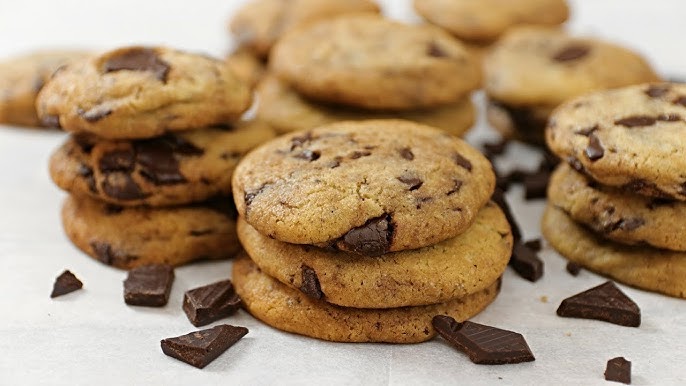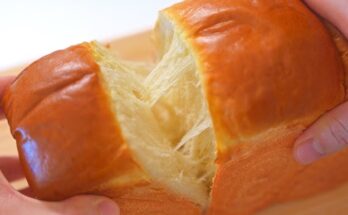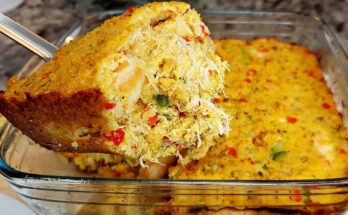Chocolate Cookies Recipe: Who doesn’t love the rich, melty, sweet goodness of a homemade chocolate cookie? Whether you’re baking for a cozy night in, a holiday gathering, or just to satisfy your sweet tooth, chocolate cookies are the ultimate treat.
This step-by-step guide will walk you through the entire process to make the most mouthwatering chocolate cookies, with helpful tips to ensure you get that perfect balance of soft and chewy with a crispy edge.
Get ready to impress your family, friends, or even just yourself with a batch of irresistible cookies made right in your kitchen.
Introduction to Chocolate Cookies
Chocolate cookies are a timeless classic in the baking world. They’re universally loved, versatile, and incredibly satisfying. What makes them so popular? It’s all about that magical combo of buttery dough and chocolate—whether it’s gooey chips, chunks, or melted swirls, the chocolate hits just right.
There are endless variations, too. From simple chocolate chip cookies to elaborate double chocolate, mint chocolate, or even spicy Mexican chocolate cookies, there’s something for every palate. Some people prefer their cookies thick and soft, others like them thin and crispy. But the beauty is—you can tweak the recipe to suit your preferences.
Cookies also have a nostalgic quality. The smell of chocolate cookies baking in the oven instantly fills a home with warmth and comfort. It’s the kind of treat that brings people together, whether around a kitchen counter or through a sweet care package in the mail.
In this guide, we’ll focus on a go-to chocolate cookie recipe that’s easy to follow and produces consistent results every time. If you’re new to baking or looking to up your cookie game, this is the perfect place to start.
Essential Ingredients for Perfect Chocolate Cookies
Let’s break down the must-have ingredients that make chocolate cookies truly unforgettable. Using high-quality components can take your cookies from average to amazing.
Dry Ingredients
- All-purpose flour: This is the base of your cookie. It gives structure without making it too dense.
- Baking soda or baking powder: These leavening agents help your cookies rise and stay fluffy.
- Salt: Just a pinch helps balance the sweetness and enhance the chocolate flavor.
- Cocoa powder (optional): If you’re aiming for double chocolate cookies, this is a must.
Wet Ingredients
- Butter: Unsalted is best so you can control the salt content. It should be at room temperature so it creams well with sugar.
- White sugar and brown sugar: White sugar adds sweetness and helps with crisp edges. Brown sugar adds moisture and chewiness because of the molasses content.
- Eggs: They bind everything together and contribute to that rich, chewy texture.
- Vanilla extract: Don’t skip it! It enhances all the flavors.
Optional Add-Ins
- Chocolate chips or chunks: Semisweet, dark, milk—it’s up to you.
- Nuts: Walnuts or pecans add crunch and complement chocolate beautifully.
- Sea salt flakes: Sprinkle a few on top before baking for a gourmet touch.
With just a few pantry staples and a little love, you’re on your way to cookie heaven.
Tools You’ll Need for This Recipe
Before diving into the mixing and baking, make sure you have the right tools on hand. Having these ready will make the whole process smoother and more enjoyable:
- Mixing bowls: You’ll need at least two—one for wet, one for dry ingredients.
- Measuring cups and spoons: Precision matters in baking.
- Hand or stand mixer: Helps to cream butter and sugar to the perfect fluffy consistency.
- Spatula or wooden spoon: For scraping down the sides and folding ingredients.
- Baking sheets: Nonstick or lined with parchment paper.
- Cookie scoop or tablespoon: For even-sized cookies.
- Cooling rack: Allows air circulation to cool cookies evenly.
You don’t need fancy equipment to bake amazing cookies, but these basics can help you get pro-level results even as a beginner.
Preparation Tips Before You Start
Jumping into baking without a little prep can lead to a mess or cookies that don’t quite hit the mark. Here are a few things you should take care of before mixing your dough:
Room Temperature Ingredients
Butter and eggs should be at room temperature. Why? Because they blend more smoothly into the batter, giving your cookies a better texture. Cold butter won’t cream well, and cold eggs can solidify melted butter, messing with the dough’s consistency.
Preheating the Oven
Always preheat your oven before putting your cookies in. Most ovens take at least 10 minutes to get to the right temperature. An oven that’s too cold can make cookies spread too much, while an oven that’s too hot can burn them on the outside before they’re done inside.
Measuring Techniques
Measure your flour by spooning it into the measuring cup and leveling it off with a knife. Scooping straight from the bag packs the flour, leading to dry cookies. Same goes for sugars—make sure they’re measured accurately to maintain that perfect balance of sweet and chewy.
Step-by-Step Guide to Making Chocolate Cookies
Now that we’ve covered the essentials, it’s time to roll up your sleeves and dive into the actual baking. Follow this foolproof, step-by-step method to bake chocolate cookies that are soft in the center, slightly crisp on the edges, and packed with rich chocolatey goodness.
Step 1: Mix the Dry Ingredients
Start by combining your dry ingredients in a medium-sized mixing bowl. You’ll need all-purpose flour, baking soda (or baking powder depending on your recipe), and a pinch of salt. If you’re making double chocolate cookies, this is where you add the cocoa powder too.
Whisk everything together until it’s evenly distributed. Mixing your dry ingredients separately ensures that the leavening agent is properly incorporated and won’t clump in the dough later. This simple step makes a huge difference in getting a uniform cookie texture.
Pro Tip: Sift your flour and cocoa powder to avoid lumps and improve the final texture of your cookies.
Step 2: Cream Butter and Sugars
This is one of the most important steps in cookie-making. Take your room-temperature butter and beat it together with both the granulated white sugar and brown sugar. Use a stand mixer or hand mixer on medium speed until the mixture turns pale, fluffy, and creamy—this usually takes about 3-5 minutes.
Creaming introduces air into the butter, giving your cookies a light and tender texture. Brown sugar also adds a slight caramel flavor and helps with chewiness, while the white sugar adds crispness to the edges. Get this part right, and you’re on your way to cookie perfection.
Don’t rush it—proper creaming sets the tone for the rest of the dough.
Step 3: Add Eggs and Vanilla Extract
Once your butter and sugar are creamed, add in the eggs one at a time. Beat well after each addition. This allows the eggs to fully emulsify with the butter mixture, which gives the cookies a smooth, cohesive texture.
Next, add a generous splash of vanilla extract. It may seem like a small ingredient, but it adds a warm depth of flavor that enhances the chocolate beautifully. Think of it as the behind-the-scenes hero of your cookie recipe.
Mix until everything is fully incorporated, but don’t overdo it. You want a well-blended base, not a whipped mixture.
Step 4: Combine Wet and Dry Ingredients
Time to bring the dough together. Gradually add your dry ingredients to the wet mixture, about one-third at a time. Mix on low speed to avoid a flour explosion. Scrape down the sides of the bowl occasionally to ensure everything gets mixed in evenly.
As soon as all the flour is absorbed, stop mixing. Overworking the dough at this stage can lead to tough, dense cookies. You want the mixture to be soft, slightly sticky, and pliable. It should hold together when you scoop it but not feel too wet or too dry.
If you’re adding cocoa powder, the dough will already start to look rich and chocolatey by this point.
Step 5: Fold in Chocolate Chips
This is the fun part! Dump in your favorite chocolate chips, chunks, or a combination of both. You can also mix in nuts, toffee bits, or even dried fruit if you want to add your own twist.
Use a spatula or wooden spoon to gently fold in the add-ins. This ensures that they’re evenly distributed without breaking or melting during mixing. Every bite of cookie should be packed with chocolatey joy.
Don’t skimp on the chocolate—more is always better when it comes to cookies, right?
Step 6: Chill the Dough
Here’s a step many people skip, but it makes a world of difference—chilling the cookie dough. Once your dough is mixed and loaded with chocolate chips, cover it with plastic wrap and pop it into the refrigerator for at least 30 minutes, or ideally an hour.
Why chill the dough? It allows the fats (like butter) to solidify again, which means your cookies won’t spread too much in the oven. Chilling also gives the flour time to hydrate fully, resulting in a thicker, chewier cookie with a deeper flavor.
If you’re planning ahead, you can even refrigerate the dough overnight. Just be sure to let it sit out for about 10 minutes before scooping, so it’s easier to handle.
Bonus: Chilled dough is less sticky and easier to shape into perfectly round cookies.
Step 7: Scoop and Bake
Once your dough is chilled, preheat your oven to 350°F (175°C) if you haven’t already. Line a baking sheet with parchment paper or a silicone baking mat.
Use a cookie scoop, tablespoon, or even your hands to form balls of dough about 1.5 inches wide. Space them about 2 inches apart on the baking sheet to allow room for spreading.
Bake the cookies for 10–12 minutes, depending on your oven and the size of your cookies. They should look slightly underbaked in the center when you take them out—don’t worry, they’ll continue to cook as they cool on the sheet.
If you like your cookies extra gooey in the center, aim for the 10-minute mark. If you prefer them more done, leave them in a bit longer, but don’t overbake!
Pro Tip: For that bakery-style look, press a few extra chocolate chips into the tops of the cookie dough balls right before baking.
Step 8: Cool and Enjoy
As tempting as it is to grab one right out of the oven, patience pays off. Let your cookies cool on the baking sheet for 5 minutes before transferring them to a wire rack. This helps them set and makes them easier to move without falling apart.
Once they’re cool enough to handle, it’s game time. Pour yourself a glass of milk, make a hot cup of coffee, or just go straight in—warm chocolate cookies are pure bliss.
These cookies are best enjoyed fresh, but they stay soft and chewy for days if stored properly (more on that later). Whether you’re indulging in one or sneaking a few (no judgment here), they’ll hit the spot every single time.
Tips for Soft and Chewy Chocolate Cookies
Want to master that soft, melt-in-your-mouth texture every single time? Here are a few expert tips:
- Use more brown sugar than white sugar: Brown sugar holds more moisture thanks to the molasses, making your cookies chewier.
- Don’t overbake: Always pull cookies out when the centers still look slightly underdone. They’ll continue baking from residual heat.
- Use room-temperature eggs and butter: This helps ingredients combine more smoothly for an even dough.
- Chill the dough: As we mentioned, this step prevents spreading and enhances flavor.
- Do a test batch: Bake one cookie first to check the texture. If it spreads too much, chill the dough longer. If it’s too thick, let the dough sit at room temp a bit.
Also, don’t underestimate the power of a good baking sheet. Darker pans absorb more heat and can overbake cookies, so opt for light-colored metal trays when you can.
Common Mistakes to Avoid
Even the most experienced bakers mess up cookies sometimes. Avoid these common pitfalls to ensure cookie success every time:
- Overmixing the dough: Once you add flour, mix until just combined. Overmixing develops gluten, leading to tough cookies.
- Incorrect flour measurement: Too much flour = dry cookies. Spoon and level instead of scooping straight from the bag.
- Skipping the chill: Dough that’s too warm will spread into flat, greasy cookies.
- Baking too long: Trust the timer and pull them out when they look slightly underdone.
- Using cold butter: It won’t cream properly, which can ruin the cookie structure.
Little mistakes can have a big impact in baking, but paying attention to the small stuff can make your cookies bakery-worthy.
Variations of Chocolate Cookies to Try
Chocolate cookies are incredibly versatile. Once you’ve mastered the classic version, you can branch out and experiment with different flavors and textures. Here are a few irresistible twists you’ll love:
Double Chocolate Chip Cookies
If you’re a serious chocolate lover, this one’s for you. These cookies have cocoa powder in the dough and are loaded with chocolate chips or chunks. The result? A fudgy, brownie-like cookie with a deep, rich flavor.
To make them, simply add 1/3 cup of unsweetened cocoa powder to your dry ingredients and maybe swap in dark chocolate chunks for an extra intense treat.
Tip: A sprinkle of sea salt on top can elevate the richness and balance the sweetness perfectly.
Chocolate Mint Cookies
This variation combines chocolate with the refreshing flavor of mint—perfect for the holidays or anyone who loves that cool-and-creamy combo.
Add a teaspoon of peppermint extract to your dough and mix in chopped Andes mints or mint-flavored chocolate chips. These cookies are amazing chilled or paired with a scoop of mint chocolate chip ice cream.
You can also drizzle them with melted white chocolate for a fancy finish.
Chocolate Peanut Butter Cookies
Chocolate and peanut butter were meant to be together. Add peanut butter chips, swirl in some creamy peanut butter, or even make a peanut butter-filled center.
For a richer cookie, use half butter and half peanut butter in your base dough. It adds a nutty undertone and makes the cookies incredibly moist.
These are a hit at bake sales and potlucks—just be sure to warn anyone with nut allergies!
How to Store and Freeze Chocolate Cookies
You’ve baked a delicious batch of cookies—now what? Here’s how to store them so they stay fresh and tasty for as long as possible:
Storing Fresh Cookies
- Store cookies in an airtight container at room temperature.
- Add a slice of bread to the container to help maintain moisture.
- They’ll stay fresh for up to 5 days, though they rarely last that long!
Freezing Cookie Dough
Want to prep ahead? Cookie dough freezes beautifully. Here’s how:
- Scoop dough balls onto a baking sheet and freeze until solid.
- Transfer frozen dough to a ziplock bag or airtight container.
- Label with the date. Dough stays good for up to 3 months.
To bake from frozen, just add an extra 1–2 minutes to your baking time. No need to thaw.
Freezing Baked Cookies
You can also freeze fully baked cookies. Let them cool completely, then wrap them individually in plastic wrap. Store in a freezer-safe bag or container.
To enjoy, thaw at room temperature or warm them in the microwave for a few seconds for that just-baked feel.
FAQs about Chocolate Cookies Recipe
Q1: What makes chocolate cookies chewy instead of crunchy?
Chewy chocolate cookies typically have more moisture in the dough. Using brown sugar instead of white sugar, adding an extra egg yolk, and slightly underbaking the cookies help keep them soft and chewy.
Q2: Can I use cocoa powder instead of melted chocolate?
Yes, you can! Cocoa powder is a great substitute for melted chocolate. Just ensure you adjust the fat content by adding a bit more butter or oil to maintain the right texture.
Q3: Why did my chocolate cookies turn out flat?
Flat cookies often result from overly soft or melted butter. Always chill the dough before baking, and ensure your baking soda or powder is still active.
Q4: How should I store chocolate cookies to keep them fresh?
Store cookies in an airtight container at room temperature for up to 5 days. For longer freshness, add a slice of bread inside the container to retain moisture.
Q5: Can I freeze chocolate cookie dough?
Absolutely! Scoop the dough into balls, freeze them on a tray, then transfer to a freezer-safe bag. You can bake them straight from the freezer—just add 1–2 extra minutes to the baking time.
Q6: What type of chocolate is best for cookies?
Semi-sweet or dark chocolate chips are ideal for a rich flavor, but you can also mix in white chocolate or chunks for variety.
Q7: How can I make my cookies more chocolatey?
Use a combination of cocoa powder and chocolate chips, or fold in chunks of chocolate bars. Dutch-processed cocoa can also intensify the chocolate flavor.
Conclusion
Baking the perfect chocolate cookies isn’t just about mixing ingredients—it’s about love, precision, and a little bit of science. From selecting quality ingredients to chilling the dough and mastering your oven’s quirks, each step contributes to that heavenly bite of sweet, chocolatey perfection.
With this step-by-step guide, you now have all the tools and tips to create cookies that rival your favorite bakery. Whether you stick to the classic or venture into delicious variations, the results are guaranteed to be mouthwatering.
So go ahead—gather your ingredients, preheat that oven, and make your kitchen smell like pure joy. Happy baking!



